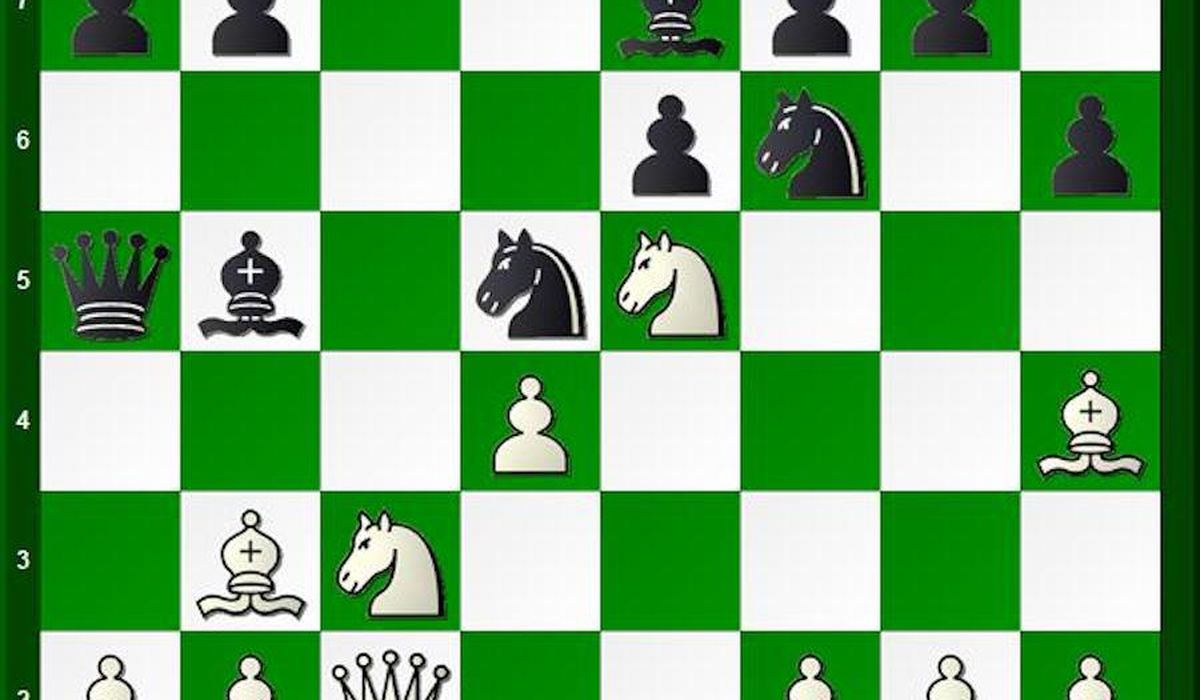
For many, the 1972 Fischer-Spassky championship match is at least as famous for the tempestuous dramas away from the board — the challenger’s diva-like near-no show, the last-minute Reykjavik arrival, the Game 2 forfeit, the soap opera over television cameras — as for the games themselves.
The truth is, however, the organizing and staging of world title matches has always been a source of Sturm und Drang, dating back to American Paul Morphy’s futile attempt to chase down English great Howard Staunton for a match back in 1858.
Before the formation of FIDE, title matches often involved tedious and tense negotiations on venue, stakes, format and purse-sharing not unlike modern boxing. Even in the modern era, there have been fights over Soviet star Mikhail Botvinnik’s “right” to an automatic rematch after twice losing the crown, the notorious aborted first Karpov-Kasparov in 1984, called off after 48 games with champion Anatoly Karpov with just one victory from the title, and the 1993 London match between Garry Kasparov and English challenger Nigel Short that broke FIDE in two and led to dueling claims to the throne for more than a decade.
One of the most tangled title affairs happened 100 years ago this year in Havana, involving two of the greatest players ever to push a pawn. It took a decade of off-and-on talks (interrupted by a world war) before rising Cuban star Jose Raul Capablanca, 32, finally secured a match with Emanuel Lasker, the 52-year-old German who had held the title for a record 27 years.
In addition to a lot of unseemly haggling over the conditions, the event featured some weird twists and turns. Lasker tried to resign his title and hand the crown to his younger rival, but Capablanca refused the gift and insisted on playing. While (guardedly) praising his challenger’s talent, Lasker would claim that the intense tropical sun and heat left him sick, dizzy and “unable to use my positional judgment” as the games ground on. Capablanca wrote an indignant reply that, among other things, accused Lasker of exaggerating the heat and his own incapacity and noted all of the games were played after sundown.
Unfortunately, the dream match-up did not produce much memorable chess. Lasker made it tough, but the Cuban was 20 years younger and at the very height of his powers. After four draws to start the contest, Capablanca broke through with four wins and no losses in the next 10 games before Lasker conceded the match and his title.
The one-sided match, featuring a monotonous string of Queen’s Gambits and Ruy Lopezes, tends to get overlooked, but there were some interesting tangles between the aging but wily king and the talented and ambitious crown prince.
The challenger broke out on top in an absorbing struggle in Game 5, when Lasker’s exchange sacrifice with 16. Ba6 Bxf3!? (Black’s best chance, in Capablanca’s opinion) 17. Bxc8 Rxc8 18. gxf3 Qxf3 19. Rg1 Re8 puts real pressure on White’s game. But Capablanca finds the clever idea 24. Kg1 cxd4 25. Rc4! dxe3 26. Rxe4 Nxe4, draining a lot of the sting out of Black’s attack. Still, despite the Cuban’s impeccable technique here (and pretty much throughout the match), the game is still in balance until 43. Qf3 Qd4 44. Qa8+?! (an inaccuracy, according to Capablanca, when 44. Kh1 was preferred; the match’s unusual 15 moves-per-hour time control meant both players faced the 45-move time crunch) Ke7 45. Qb7+ Kf8?? (played in time pressure and losing at once) 46. Qb8+!, and White wins after 47… Kg7 (Ke7 48. Qe5+ Qxe5 49. Rxe5+, picking off the knight) 47. Qe5+ Qxe5 48. Rxe5, and the knight can’t escape with 48…Ng4 because of 49. Rg5+; Lasker resigned.
The one moment of real drama came in Game 10, with the challenger still holding the one-point lead. A lively historical discussion has emerged around the position after 15. Ne5 Bb5 16. Rfe1 Nbd5 (see diagram), when Lasker could have played 17. Bxf6!? Bxf6 (Nxf6 18. Ng6! Rfe8 19. Rxe6 fxe6 20. Bxe6+ Kf7 21. Nf8+ Kh8 22. Qh7+! Nxh7 23. Ng6 mate) 18. Bxd5 exd5 19. Ng4 Bd8 20. Qf5!, with strong pressure on Black’s position.
Having missed his chance, White soon is saddled with an isolated d-pawn and an immobile queenside pawn majority, both of which Black exploits in masterful fashion. Much like current world champion Magnus Carlsen, Capablanca needed only the tiniest of advantages to bring down even the strongest masters of his day. Black cashes in materially after 41. Nc3 Rc1+ 42. Kf2 (Rd1 Rxd1+ 43. Nxd1 Nc6) Nc6 43. Nd1 Rb1! (sidestepping Lasker’s wily trap 43…Nb4? because of 44. Rd2 Rb1 45. Nb2! Rxb2 46. Rxb2 Nd3+ 47. Ke2 Nxb2 48. Kd2, drawing because the knight can’t escape) 44. Ke2 Rxb3, when 45. Rxb3 Nxd4+ is an easy win.
Black slowly reels in the win, never giving White a chance to blockade the position. It’s over after 64. Re3 e5 (finally!) 65. Rd3 (Ne2 Nd2+ 66. Kf2 e4 67. Rc3 Nf3 68. Ke3 Ne1 69. Kf2 Ng2, and “White would be helpless,” Capablanca later wrote) exd4 66. Rxd4 Kc5 67. Rd1 d4 68. Rc1+ Kd5, and the passed pawn will soon prove decisive. Lasker resigned.
Capablanca-Lasker, World Championship Match, Game 5, Havana, March 1921
1. d4 d5 2. Nf3 Nf6 3. c4 e6 4. Bg5 Nbd7 5. e3 Be7 6. Nc3 O-O 7. Rc1 b6 8. cxd5 exd5 9. Qa4 c5 10. Qc6 Rb8 11. Nxd5 Bb7 12. Nxe7+ Qxe7 13. Qa4 Rbc8 14. Qa3 Qe6 15. Bxf6 Qxf6 16. Ba6 Bxf3 17. Bxc8 Rxc8 18. gxf3 Qxf3 19. Rg1 Re8 20. Qd3 g6 21. Kf1 Re4 22. Qd1 Qh3+ 23. Rg2 Nf6 24. Kg1 cxd4 25. Rc4 dxe3 26. Rxe4 Nxe4 27. Qd8+ Kg7 28. Qd4+ Nf6 29. fxe3 Qe6 30. Rf2 g5 31. h4 gxh4 32. Qxh4 Ng4 33. Qg5+ Kf8 34. Rf5 h5 35. Qd8+ Kg7 36. Qg5+ Kf8 37. Qd8+ Kg7 38. Qg5+ Kf8 39. b3 Qd6 40. Qf4 Qd1+ 41. Qf1 Qd7 42. Rxh5 Nxe3 43. Qf3 Qd4 44. Qa8+ Ke7 45. Qb7+ Kf8 46. Qb8+ Black resigns.
Lasker-Capablanca, World Championship Match, Game 10, April 1921
1. d4 d5 2. c4 e6 3. Nc3 Nf6 4. Bg5 Be7 5. e3 O-O 6. Nf3 Nbd7 7. Qc2 c5 8. Rd1 Qa5 9. Bd3 h6 10. Bh4 cxd4 11. exd4 dxc4 12. Bxc4 Nb6 13. Bb3 Bd7 14. O-O Rac8 15. Ne5 Bb5 16. Rfe1 Nbd5 17. Bxd5 Nxd5 18. Bxe7 Nxe7 19. Qb3 Bc6 20. Nxc6 bxc6 21. Re5 Qb6 22. Qc2 Rfd8 23. Ne2 Rd5 24. Rxd5 cxd5 25. Qd2 Nf5 26. b3 h5 27. h3 h4 28. Qd3 Rc6 29. Kf1 g6 30. Qb1 Qb4 31. Kg1 a5 32. Qb2 a4 33. Qd2 Qxd2 34. Rxd2 axb3 35. axb3 Rb6 36. Rd3 Ra6 37. g4 hxg3 38. fxg3 Ra2 39. Nc3 Rc2 40. Nd1 Ne7 41. Nc3 Rc1+ 42. Kf2 Nc6 43. Nd1 Rb1 44. Ke2 Rxb3 45. Ke3 Rb4 46. Nc3 Ne7 47. Ne2 Nf5+ 48. Kf2 g5 49. g4 Nd6 50. Ng1 Ne4+ 51. Kf1 Rb1+ 52. Kg2 Rb2+ 53. Kf1 Rf2+ 54. Ke1 Ra2 55. Kf1 Kg7 56. Re3 Kg6 57. Rd3 f6 58. Re3 Kf7 59. Rd3 Ke7 60. Re3 Kd6 61. Rd3 Rf2+ 62. Ke1 Rg2 63. Kf1 Ra2 64. Re3 e5 65. Rd3 exd4 66. Rxd4 Kc5 67. Rd1 d4 68. Rc1+ Kd5 White resigns.
• David R. Sands can be reached at 202/636-3178 or by email at [email protected].




